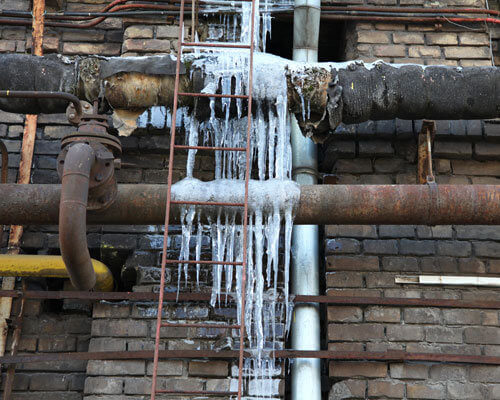What are your thoughts with regards to Winter Plumbing Precautions: Preventing Frozen Pipes?

Winter can ruin your pipes, particularly by freezing pipes. Here's exactly how to prevent it from taking place and what to do if it does.
Intro
As temperatures drop, the danger of frozen pipes rises, possibly causing expensive repair services and water damages. Comprehending just how to avoid frozen pipes is important for homeowners in cool climates.
Avoidance Tips
Insulating susceptible pipelines
Wrap pipes in insulation sleeves or use heat tape to secure them from freezing temperatures. Focus on pipelines in unheated or external areas of the home.
Home heating methods
Keep indoor spaces sufficiently heated up, specifically locations with pipes. Open cupboard doors to allow cozy air to distribute around pipelines under sinks.
Exactly how to recognize icy pipelines
Seek reduced water flow from faucets, unusual odors or sounds from pipes, and noticeable frost on exposed pipes.
Long-Term Solutions
Architectural changes
Take into consideration rerouting pipelines far from outside walls or unheated areas. Add additional insulation to attic rooms, cellars, and crawl spaces.
Updating insulation
Buy high-quality insulation for pipes, attics, and walls. Appropriate insulation aids keep regular temperatures and reduces the threat of icy pipes.
Securing Outside Pipes
Garden pipes and outdoor taps
Disconnect and drain yard pipes before wintertime. Install frost-proof spigots or cover outside taps with insulated caps.
Comprehending Icy Pipes
What causes pipelines to ice up?
Pipes freeze when exposed to temperatures below 32 ° F (0 ° C) for expanded periods. As water inside the pipelines ices up, it broadens, putting pressure on the pipe walls and potentially triggering them to burst.
Dangers and problems
Frozen pipelines can lead to water system disturbances, residential or commercial property damage, and expensive repair services. Burst pipes can flooding homes and create substantial structural damage.
Indicators of Frozen Water Lines
Identifying icy pipes early can prevent them from rupturing.
What to Do If Your Pipes Freeze
Immediate activities to take
If you presume frozen pipelines, maintain faucets open up to ease pressure as the ice melts. Make use of a hairdryer or towels taken in warm water to thaw pipelines gradually.
Final thought
Stopping frozen pipes requires positive steps and fast feedbacks. By understanding the causes, signs, and preventive measures, property owners can shield their pipes throughout cold weather.
5 Ways to Prevent Frozen Pipes
Drain Outdoor Faucets and Disconnect Hoses
First, close the shut-off valve that controls the flow of water in the pipe to your outdoor faucet. Then, head outside to disconnect and drain your hose and open the outdoor faucet to allow the water to completely drain out of the line. Turn off the faucet when done. Finally, head back to the shut-off valve and drain the remaining water inside the pipe into a bucket or container. Additionally, if you have a home irrigation system, you should consider hiring an expert to clear the system of water each year.
Insulate Pipes
One of the best and most cost-effective methods for preventing frozen water pipes is to wrap your pipes with insulation. This is especially important for areas in your home that aren’t exposed to heat, such as an attic. We suggest using foam sleeves, which can typically be found at your local hardware store.
Keep Heat Running at 65
Your pipes are located inside your walls, and the temperature there is much colder than the rest of the house. To prevent your pipes from freezing, The Insurance Information Institute suggests that you keep your home heated to at least 65 degrees, even when traveling. You may want to invest in smart devices that can keep an eye on the temperature in your home while you’re away.
Leave Water Dripping
Moving water — even a small trickle — can prevent ice from forming inside your pipes. When freezing temps are imminent, start a drip of water from all faucets that serve exposed pipes. Leaving a few faucets running will also help relieve pressure inside the pipes and help prevent a rupture if the water inside freezes.
Open Cupboard Doors
Warm your kitchen and bathroom pipes by opening cupboards and vanities. You should also leave your interior doors ajar to help warm air circulate evenly throughout your home.

I stumbled upon that post on Winter Plumbing Precautions: Preventing Frozen Pipes while browsing on the web. Liked our content? Please share it. Help somebody else find it. I am grateful for your time. Don't hesitate to stop by our site back soon.
Instant Quote